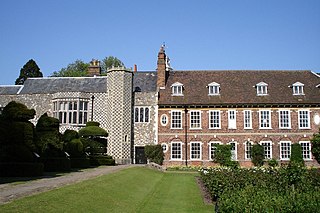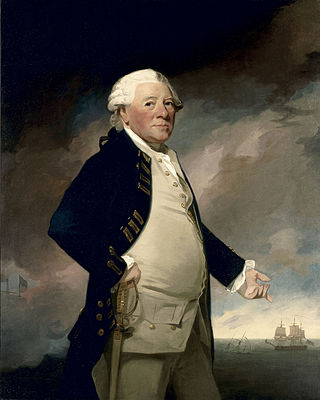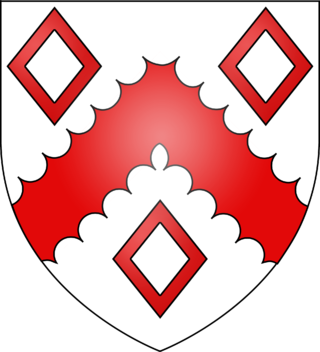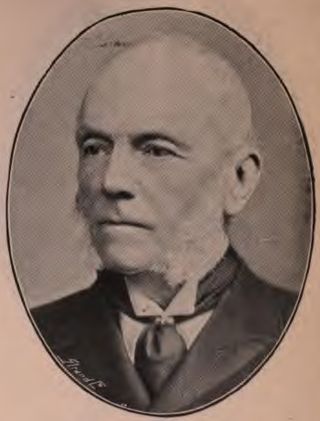There have been three baronetcies created for descendants of the ancient Lancashire family of Gerard.

There have been five baronetcies created for persons with the surname Barker, three in the Baronetage of England, one in the Baronetage of Great Britain and one in the Baronetage of the United Kingdom. All five creations are extinct.

There have been six baronetcies created for persons with the surname Smyth, two in the Baronetage of England, one in the Baronetage of Great Britain, one in the Baronetage of Ireland and two in the Baronetage of the United Kingdom. One creation is extant as of 2010.

The Errington Baronetcy, of Ness in the County Palatine of Chester, was created in the Baronetage of the United Kingdom on 26 June 1963 for Sir Eric Errington, 1st Baronet.

There have been two Baronetcies created for persons with the surname Austen, one in the Baronetage of England and one in the Baronetage of Great Britain. Both creations are extinct.

There have been seven baronetcies created for persons with the surname Parker, three in the Baronetage of England, two in the Baronetage of Great Britain and two in the Baronetage of the United Kingdom. Two of the creations are extant as of 2008. Though none of the different families of baronets were related, several supplied a number of flag officers to the Royal Navy.
The Fenwick Baronetcy, of Fenwick in the County of Northumberland, was a title in the Baronetage of England. It was created on 9 June 1628 for Sir John Fenwick, of Wallington Hall, Northumberland. He sat as Member of Parliament for Northumberland and Cockermouth. The second and third Baronets also represented Northumberland in Parliament. The title became extinct when the third Baronet was executed for treason on 27 January 1697.

There have been twenty one baronetcies created for persons with the surname Williams, eight in the Baronetage of England, three in the Baronetage of Great Britain and ten in the Baronetage of the United Kingdom. Only six of the creations are extant as of 2017.

There have been four baronetcies created for persons with the surname Hope, three in the Baronetage of Nova Scotia and one in the Baronetage of the United Kingdom. As of 2010 one creation is extant, one dormant and two extinct.
There have been six baronetcies created for persons with the surname Newton, three in the Baronetage of England, one in the Baronetage of Nova Scotia and two in the Baronetage of the United Kingdom.
There have been four baronetcies created for persons with the surname Temple, two in the Baronetage of England, one in the Baronetage of Nova Scotia and one in the Baronetage of the United Kingdom.

There have been four baronetcies created for people with the surname Drake, three in the Baronetage of England and one in the Baronetage of Great Britain.
There have been three baronetcies created in the Baronetage of England for members of the Skipwith family of Skipwith, Yorkshire, which relocated to Lincolnshire in the 14th century. They were a successful court family, with one member, Margaret Skipwith, seen as a possible queen of England after the death of Henry VIII's third wife, Jane Seymour. One creation of the baronetcy is extant as of 2008.

The Spring Baronetcy, of Pakenham in the County of Suffolk, is a title in the Baronetage of England.
The Blackwell Baronetcy, of Sprowston in the County of Norfolk, was a title in the Baronetage of Great Britain.
The Kemp Baronetcy, of Gissing in the County of Norfolk, was a title in the Baronetage of England. It was created on 14 March 1642 for Robert Kemp. The second Baronet sat as member of parliament for Norfolk and Dunwich. The third Baronet was member of parliament for Dunwich and Suffolk. The fourth Baronet was member of parliament for Orford. The title became extinct on the death of the twelfth Baronet in 1936.
The Lumley Baronetcy, of Bardfield Magna in the County of Essex, was a title in the Baronetage of England. It was created on 8 January 1641 for Martin Lumley, Member of Parliament for Essex. He was the son of Sir Martin Lumley, Lord Mayor of London from 1623 to 1624. The title became extinct on the death of the fourth Baronet in 1771.
There have been two baronetcies created for persons with the surname Mildmay, one in the Baronetage of England and one in the Baronetage of Great Britain. Both are extinct.

There have been five baronetcies created for persons with the surname Morgan, two in the Baronetage of England, one in the Baronetage of Great Britain and two in the Baronetage of the United Kingdom. All five creations are extinct.
There have been three baronetcies created for persons with the surname Boteler, all in the Baronetage of England. All three creations are extinct.










